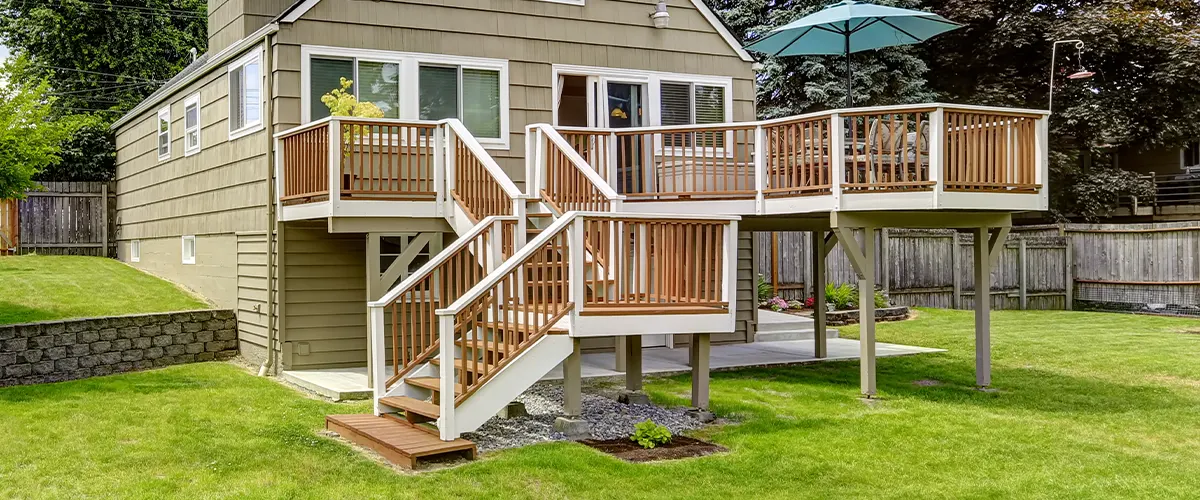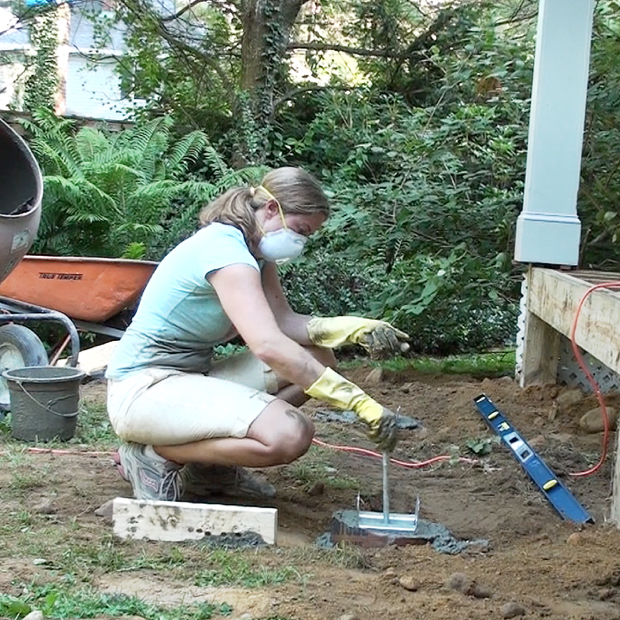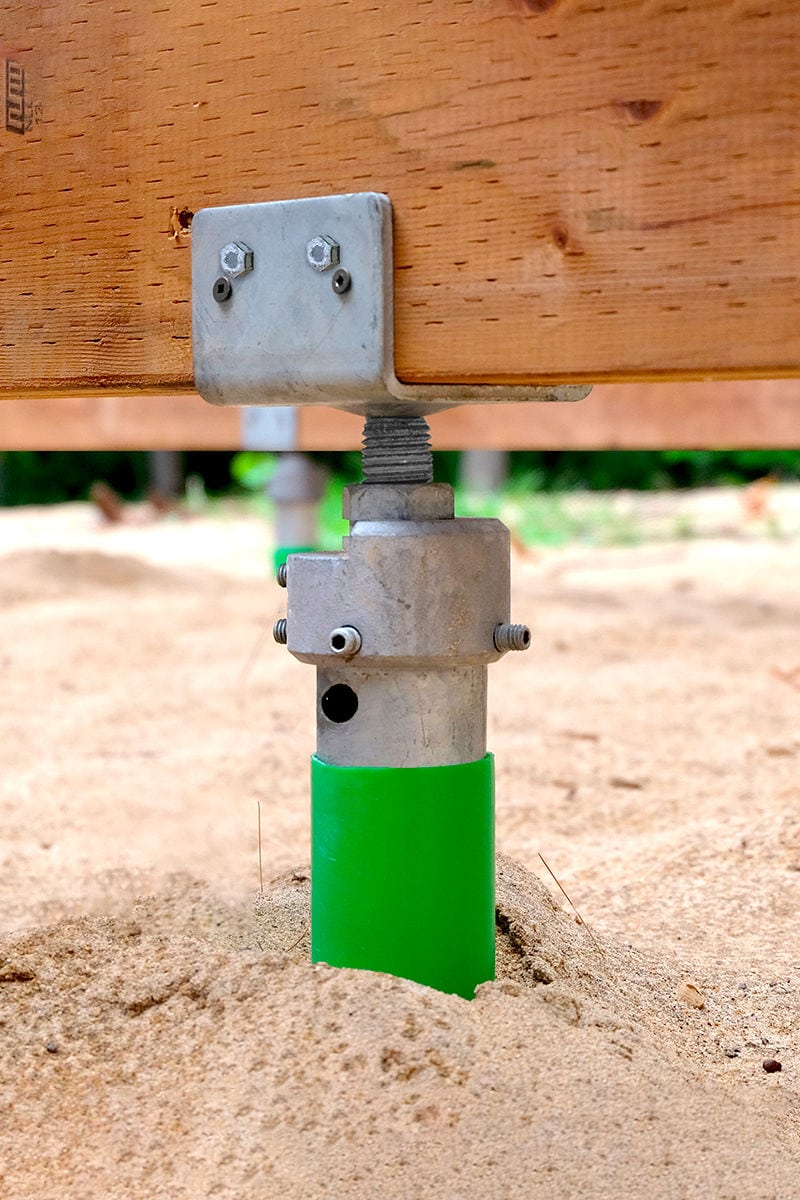Deck Footings Demystified: Your Plan for a Safe, Long-Lasting Outdoor Place
Deck Footings Demystified: Your Plan for a Safe, Long-Lasting Outdoor Place
Blog Article
Professional Tips for Putting Up Deck Footings to Assistance Your Outdoor Area
When it comes to developing a deck, among the most important components to take into consideration is the setup of proper grounds. These grounds are the structure upon which your exterior area will relax, giving stability and support for many years ahead. But what precisely does it require to mount deck footings correctly? In this conversation, we will discover skilled suggestions and techniques that can aid guarantee a resilient and successful deck installation. From choosing the ideal sort of footings to staying clear of typical errors, we will certainly offer you with the expertise and insights you need to with confidence embark on your deck-building trip. Allow's dive right in and find the key to a strong and resilient outdoor area.
Importance of Appropriate Deck Grounds
Appropriate deck grounds are vital for making sure the stability and durability of your outside space. When building a deck, it is crucial to focus on the foundation on which it will certainly rest. Deck footings supply the needed support for the entire framework and help distribute the weight uniformly - Deck Footings. Without strong and correctly set up grounds, your deck might end up being unsteady, resulting in security risks and costly repair services.

Along with security, proper deck footings likewise add to the long life of your outside space (Deck Footings). Grounds that are created and created to endure the aspects and dirt problems in your area will help protect against the deck from changing or clearing up with time. By guaranteeing the grounds are properly sized and mounted, you can reduce the threat of damage to the deck framework, prolonging its life expectancy and minimizing the need for pricey repair services or replacements

Picking the Right Kind Of Grounds
When picking the ideal kind of grounds for your deck, it is essential to consider variables such as dirt conditions, local building ordinance, and the total style of your outdoor space. The kind of footing you choose will play a vital function in making sure the stability and longevity of your deck.
One usual type of footing is the concrete ground. Concrete footings are appropriate for most soil conditions and offer superb support for decks.
Sometimes, you may require to make use of specialized footings, such as pile grounds or deep structures, if you are constructing a large or multi-level deck. These grounds are created to distribute the weight of the deck over a larger area, making sure security and preventing settling or sinking.
Prior to selecting a kind of ground, it is vital to seek advice from neighborhood building codes and policies to guarantee compliance. Furthermore, take into consideration the layout and intended usage of your outside area. Aspects such as the dimension, shape, and load-bearing requirements of your deck will affect the type of footing that is most suitable.
Preparing the Ground for Footing Installation
To properly prepare the ground for footing setup, it is essential to evaluate the dirt conditions and take essential steps to ensure security and resilience of the deck. The initial step is to excavate the location where the footings will be installed. The depth of the excavation will depend upon the frost line in your area and the particular needs of the deck style. It is crucial to get rid of any kind of plants, rocks, or debris from the excavation to make certain a strong foundation.
Once the area has been excavated, the following action is to compact the soil. This can be done using a plate compactor or by utilizing a hand tamper. Compacting the dirt helps to eliminate any kind of spaces or air pockets, which can cause settling and instability with time.
After condensing the dirt, it is crucial you could try this out to lay a layer of gravel or crushed stone at the base of the excavation. This will certainly supply drainage and assistance to stop water from pooling around the footings, which can bring about erosion and instability.
Step-by-Step Guide to Installing Deck Footings
After appropriately preparing the ground for footing setup, the following step is to start the process of mounting deck footings. This detailed overview will offer you with a clear understanding of just how to mount deck footings for your exterior space.
Establish the place: Beginning by marking the positions of the deck grounds utilizing stakes and string. Guarantee that the locations line up with the style and layout of your deck.
Dig the openings: Utilize a post opening digger or an auger to dig the openings for the footings. The depth and size of the holes ought to be in conformity with neighborhood building ordinance and the particular requirements of your deck layout.
Level the openings: Make use of a level to make sure that the holes are dug to the appropriate depth and are level with each other. (Deck Footings)
Include gravel: Place a layer of crushed rock at the end of each hole to boost drain and prevent the timber from decaying.
Place the grounds: Put the grounds right into the openings, ensuring they are level and plumb. Use a level and a measuring tape to make certain precision.
Safeguard the grounds: Pour concrete into the holes around the grounds, loading them to the top. Utilize a message degree to make certain the footings stay degree as the concrete sets.
Permit time for treating: Let the concrete cure according to the supplier's guidelines before proceeding with the deck construction.
Usual Mistakes to Stay Clear Of During Footing Installation
One essential facet to take into consideration throughout the setup of deck grounds is staying clear of usual errors that can endanger the security and long life of your exterior area. While deck grounds may seem like a straightforward and straightforward part of the construction process, neglecting specific factors can result in pricey repair services and possible safety and security threats down the line.

Additionally, ignoring to install correct drain procedures can cause water to gather around the grounds, bring about rot, degeneration, and the ultimate weakening of the deck's foundation. Using the incorrect type of footing material or failing to appropriately protect the footings can jeopardize their structural integrity.
To prevent these errors, it is important to talk to a professional or follow market standards to ensure appropriate footing installation. By doing so, you can guarantee the security and durability of your outdoor room, providing a enjoyable and risk-free setting for several years ahead.
Final Thought
In conclusion, installing correct deck that site grounds is essential for the stability YOURURL.com and long life of your outside area. By picking the ideal sort of footings and appropriately preparing the ground, you can make certain a solid structure for your deck. Adhering to a detailed guide and staying clear of usual errors during footing installation will certainly further improve the longevity and safety of your deck.
Correct deck footings are important for making certain the stability and longevity of your outdoor room. The grounds offer as a link in between the ground and the deck, permitting the weight of the deck and its residents to be spread evenly into the soil.One typical kind of footing is the concrete footing. Insert the grounds: Place the footings into the openings, making certain they are level and plumb. Protect the footings: Pour concrete right into the openings around the footings, filling them to the top.
Report this page